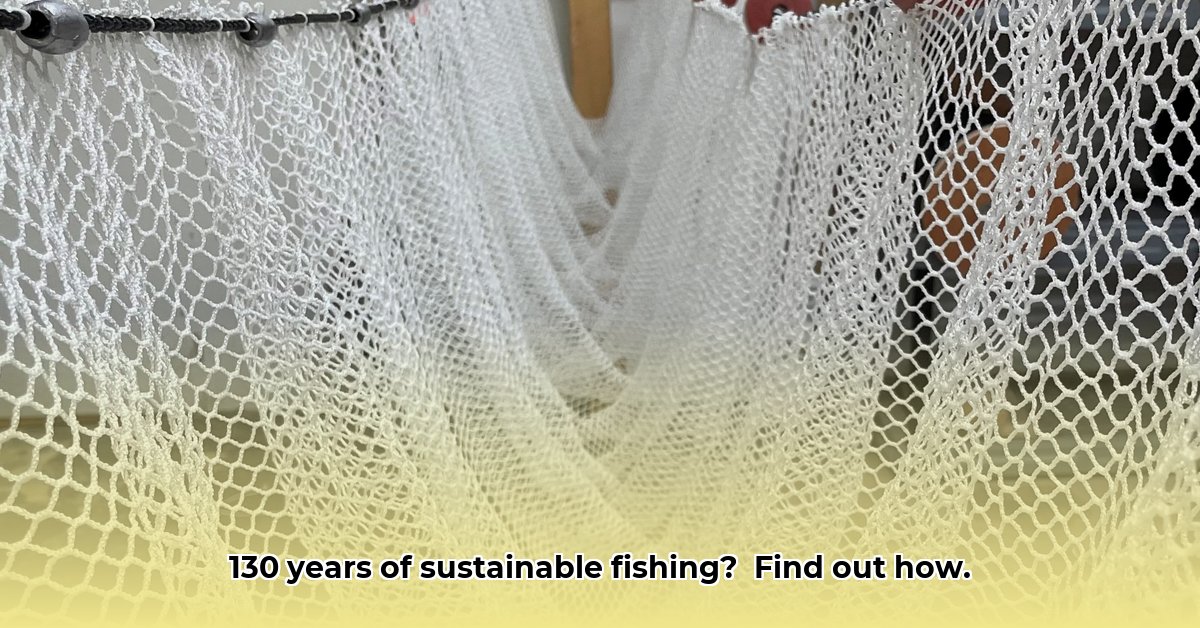
A Century of Knots and Nets: The Duluth Nets Legacy
For 130 years, Duluth Nets (formerly the H. Christiansen Company) has been a cornerstone of the Duluth, Minnesota fishing community, crafting high-quality nets renowned for their durability. This legacy, built on generations of skilled craftsmanship, is a powerful testament to their enduring presence in the industry. But in a world increasingly focused on environmental sustainability, how does this venerable company's production measure up? This narrative explores their journey, highlighting both their achievements and the areas ripe for transformation.
The company's history is a compelling narrative of adaptation and innovation. Starting as a small workshop over a century ago, they've witnessed and responded to numerous technological advancements, evolving from hand-woven nets to incorporating modern materials like nylon. This evolution, however, presents a crucial question: how has their commitment to sustainability kept pace?
Diving Deep into Sustainability: Transparency and the Path Forward
While Duluth Nets emphasizes the quality and longevity of their nets – a factor that inherently contributes to sustainability by reducing the frequency of replacements – a comprehensive evaluation of their environmental impact requires greater transparency. Currently, information concerning their sustainability practices remains limited. Addressing this gap is paramount. Specifically, more data is needed on:
- Material Sourcing: What specific materials compose their nets? Are these materials sourced sustainably, prioritizing responsible resource management and minimizing ecological harm? Clarity on this is critical for evaluating the overall environmental performance of their products. Are they exploring bio-based or recycled alternatives?
- Manufacturing Processes: A detailed life-cycle assessment (LCA) – analyzing the net's environmental impact from raw material extraction to disposal – is essential. This would transparently quantify their energy usage, waste generation, and overall carbon footprint. This data-driven approach is crucial for a credible sustainability narrative.
- End-of-Life Management: What happens to Duluth Nets once they've reached the end of their lifespan? Do they have a robust recycling program in place to prevent discarded nets from contributing to plastic pollution in oceans and waterways? This often-overlooked aspect of sustainability is crucial.
These questions highlight the need for increased transparency and open communication to build trust with environmentally conscious consumers and stakeholders.
Challenges and Opportunities: Navigating a Competitive Landscape
Duluth Nets operates in a global market, facing intense competition from lower-cost imports. This challenge, however, presents an opportunity to distinguish themselves. The growing demand for eco-friendly products provides a compelling opportunity to position Duluth Nets as a leader in sustainable fishing net production. By prioritizing transparency and investing in sustainable practices, they can attract environmentally conscious consumers and businesses, building a stronger brand reputation.
Several key strategies can help them achieve this:
- Highlighting the Heritage of Craftsmanship: Their long history of quality and durability inherently reduces the need for frequent net replacements, minimizing environmental impact. This legacy of craftsmanship should be central to their brand messaging. Think of it as sustainable by design.
- Strategic Partnerships: Collaborating with organizations such as the Marine Stewardship Council (MSC) or other industry-recognized sustainability certifiers would build credibility and trust. This independent verification of their sustainability claims would significantly enhance customer confidence.
- Embracing Innovation: Investing in research and development to explore innovative, sustainable materials offers significant potential for environmental advancement. This proactive approach to material science could lead to breakthroughs in biodegradable or recycled options.
A Roadmap to a Sustainable Future: Actionable Steps
Achieving substantial improvements in sustainability for Duluth Nets requires a comprehensive, long-term strategic plan. This isn't merely about superficial changes; it is a journey requiring deep commitment from all stakeholders.
Key Actions:
- Transparency Initiatives (0-1 Year): Publish a detailed sustainability report, complete with an LCA, and update their website with comprehensive information about their materials, manufacturing, and end-of-life management. This is the foundation of building trust.
- Strategic Partnerships (1-3 Years): Seek partnerships with environmental organizations that specialize in sustainable materials, waste management, and lifecycle assessments to validate their claims and help them achieve specific sustainability goals.
- Material Innovation (3-5 Years): Invest in R&D to explore and implement the use of innovative and sustainable materials such as recycled or biodegradable options in their net production. This transition requires significant resources and testing for quality and performance.
By embracing these changes, Duluth Nets can solidify its place not just as a historical figure in the fishing industry, but as a leader in sustainable fishing practices.
Conclusion: A Legacy of Sustainability
Duluth Nets' 130-year history is a testament to quality and craftsmanship. Now, it's time to build upon this legacy by weaving sustainability into the very fabric of their operations. Through transparency, innovation, and strategic partnerships, Duluth Nets has the potential to successfully navigate the challenges and capitalize on the opportunities that lie ahead, solidifying its position as a leader in sustainable fishing net production for generations to come.